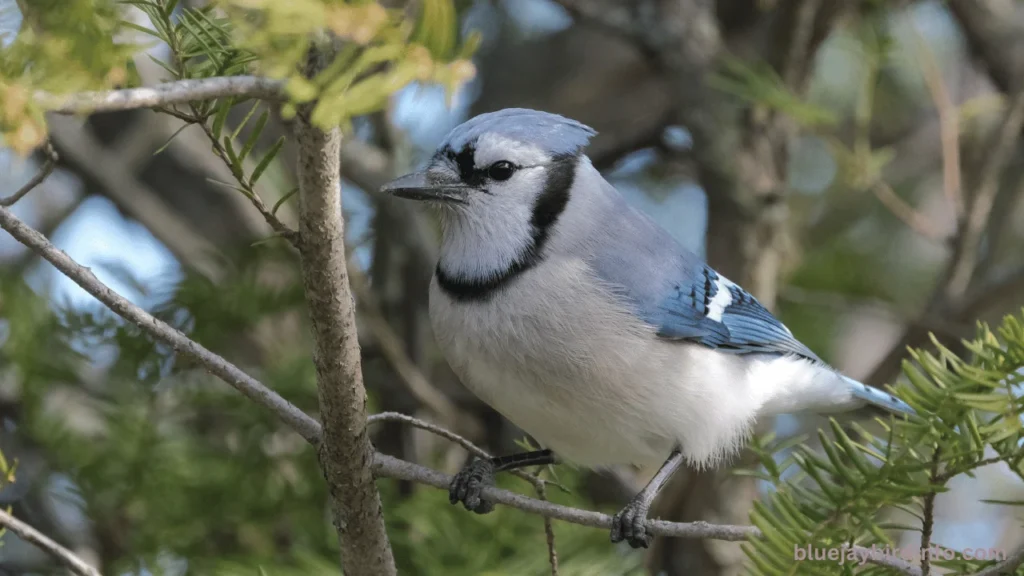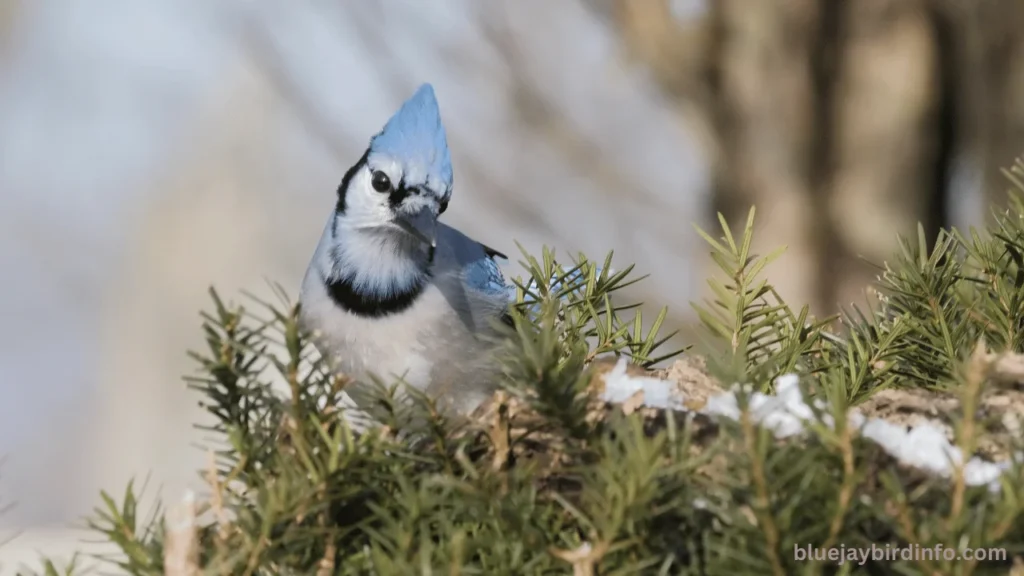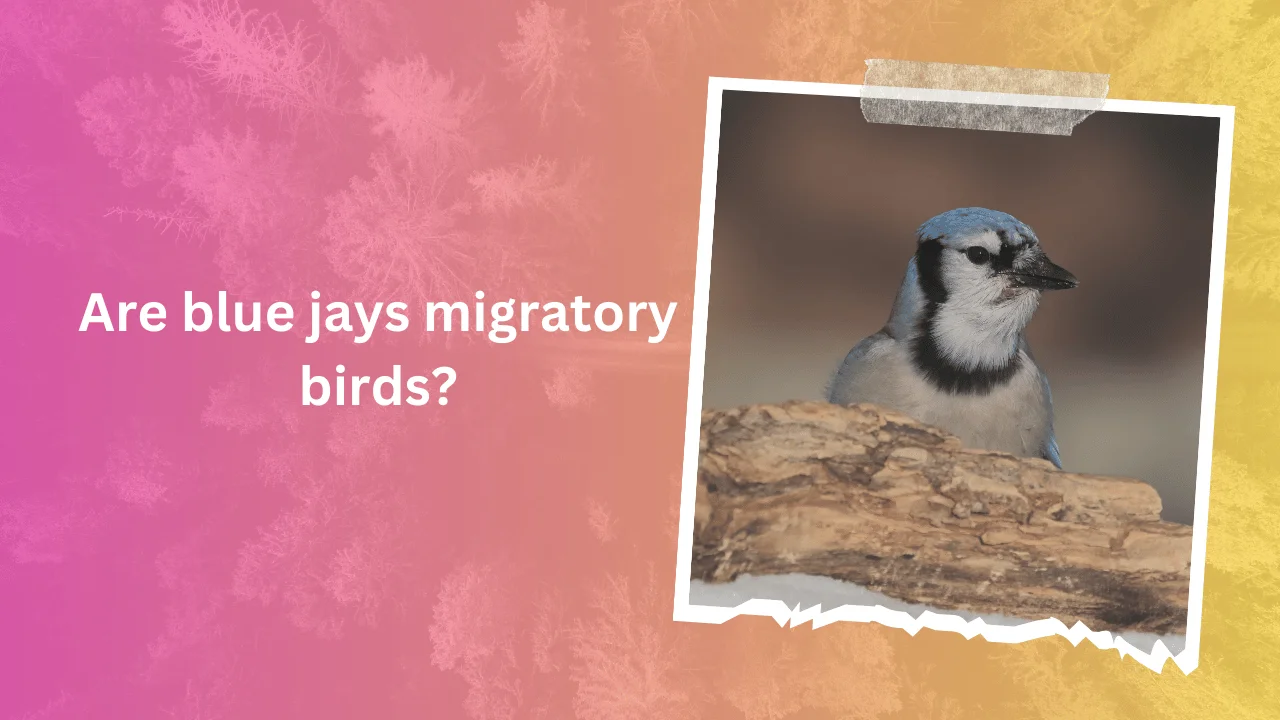Every autumn, a flurry of activity fills the air as blue jays embark on their seasonal journeys. Known for their striking blue feathers and raucous calls, these birds exhibit an astonishing adaptability to their surroundings.
Unlike many other species that travel thousands of miles, blue jays engage in migratory behavior that reflects a more intricate relationship with their environment. As the leaves turn and the air grows crisp, blue jays take to the skies, not just to flee the cold but to follow the resources they depend on, showcasing their remarkable resilience in the face of seasonal change.
While some bird species are known for their long-distance migrations, blue jays display a more complex pattern of movement influenced by various factors, including habitat conditions and food availability.
This article aims to delve into the migratory behavior of blue jays, examining how these intelligent birds navigate their journeys and the critical role these movements play in their survival.
Understanding their migration patterns not only highlights their adaptability but also reveals the intricate connections between wildlife and the environments they inhabit.
Blue jays thrive in a range of habitats, from forests to urban areas, and their geographic distribution is vast, stretching across much of North America. These birds serve an important ecological role, such as seed dispersal, which contributes to forest regeneration.
As we explore their migratory habits, we will uncover the benefits and challenges that come with these journeys, providing insight into the life of one of nature’s most fascinating birds. Join us as we navigate the skies with blue jays and discover the significance of their movements in a constantly changing world.
Contents
Blue Jay Migration Patterns:
Blue jays exhibit fascinating migratory patterns that vary significantly based on their geographical location. Generally, these birds inhabit the eastern and central regions of North America during the breeding season, nesting primarily in deciduous and mixed forests.
As winter approaches, many blue jays from northern regions, such as Canada, migrate southward to states like Texas and Florida to escape the harsh cold. However, it’s important to note that not all blue jays migrate; those in more temperate areas, such as parts of the Midwest, often remain resident birds year-round.
The decision to migrate is influenced by several factors, including food availability, temperature, and day length. As acorns and other food sources become scarce in late fall, blue jays may begin their journey southward to find more abundant resources.

Additionally, as days grow shorter, the hormonal changes in blue jays trigger migratory instincts, prompting them to seek warmer climates. This adaptability not only reflects their survival strategies but also emphasizes the interconnectedness of their behaviors with environmental conditions.
Understanding these migration patterns is crucial for appreciating how blue jays navigate their habitats and the complexities of their ecological roles throughout the changing seasons.
Habitat and Food Availability
The habitat conditions and food availability play a crucial role in influencing blue jay migration patterns. These birds thrive in environments rich in deciduous and mixed forests, where they can find a diverse array of food sources, including acorns, seeds, fruits, and insects.
As winter approaches and food becomes scarce, blue jays are compelled to migrate to areas where resources are more abundant. For instance, a sudden decline in acorn production due to environmental factors can trigger early migration, as these birds search for alternative habitats that can sustain them during the colder months.
Changes in habitat, whether due to urban development, deforestation, or natural disasters, can significantly alter blue jay migration patterns.
If their traditional foraging grounds become inaccessible, these birds may adapt by seeking new areas that provide sufficient food and shelter. Furthermore, the ongoing threat of climate change poses additional challenges for blue jays.
As temperatures rise and weather patterns shift, their migratory routes and timing may be affected, potentially leading to mismatches between their arrival in new habitats and the availability of food resources.
Understanding these dynamics is essential for conserving blue jay populations and ensuring they can successfully navigate the challenges posed by changing environments.
Geographic Variation
The geographic variation in blue jay migration patterns is influenced by several factors, including latitude, altitude, and proximity to water bodies. In general, blue jays that reside in northern regions tend to migrate farther south as winter approaches, while those in more southern areas may remain resident year-round.
This variation in latitude results in differing migration distances and timings, as blue jays adapt to the climatic conditions specific to their geographic location.
Altitude also plays a significant role in shaping migration behavior. Blue jays that inhabit higher elevations may migrate differently compared to those in lowland areas, as they must navigate varying weather conditions and food availability that are unique to their environment.
Furthermore, proximity to water bodies can influence migration timing, as areas near lakes or rivers often provide rich food sources, encouraging blue jays to linger longer before their migrations.
This geographic diversity can lead to distinct regional differences in migratory behavior. For instance, blue jays in the Northeast might exhibit more pronounced migratory patterns compared to their counterparts in the Southeast, where milder winters allow for less migration.
By examining these geographic variations, researchers can better understand how blue jays adapt to their environments and how changing climates may impact their migratory strategies in the future.
Individual Variation
Individual variation in blue jay migration patterns can be significant, influenced by various factors such as age, sex, and experience. Younger blue jays, for instance, may display different migratory behaviors compared to their older counterparts, often due to a lack of experience in navigating migration routes.
Age can play a crucial role, as older birds typically have more knowledge about food availability and safe habitats, which can lead them to make more strategic migration decisions.
Sex also plays a part in migration patterns. Male and female blue jays may exhibit different tendencies in their migratory behavior, often influenced by reproductive needs or social dynamics. For instance, females might prioritize locations that offer safer nesting sites, while males might venture farther in search of better feeding opportunities.
This sexual dimorphism in behavior can lead to varied migration strategies within the same population.
Furthermore, the role of genetics and inherited traits cannot be overlooked. Some blue jays may possess genetic predispositions that influence their migratory behavior, such as timing and distance. These inherited traits can interact with environmental factors to shape how individual birds approach migration.
Understanding this individual variation helps researchers comprehend the complexities of blue jay migration and the broader implications for conservation and habitat preservation.
Conservation Implications
The migration patterns of blue jays hold significant implications for conservation efforts aimed at preserving their populations and habitats. As these birds navigate vast distances in search of food and suitable environments, they are increasingly affected by habitat loss, climate change, and other anthropogenic factors.
Changes in their natural habitats can disrupt their migratory routes, leading to decreased survival rates and reduced reproductive success. For instance, the loss of forested areas or wetlands can limit the availability of food sources and safe nesting sites, forcing blue jays to alter their migration strategies or abandon certain areas altogether.
Climate change further exacerbates these challenges, altering seasonal weather patterns and impacting the availability of critical resources during migration. Fluctuations in temperature and precipitation can affect food production, which in turn influences blue jays’ migratory behavior.
For example, if food sources like acorns or insects become scarce due to changes in climate, blue jays may struggle to find adequate nourishment, ultimately impacting their health and reproductive success.
To mitigate these challenges, it is crucial to develop effective conservation strategies that focus on protecting blue jay habitats and their migratory routes. This can include efforts to restore native forests, implement sustainable land-use practices, and establish protected areas that provide safe environments for foraging and nesting.
Additionally, public education and community engagement can play vital roles in raising awareness about the importance of blue jays and their ecological contributions. By prioritizing these conservation efforts, we can help ensure the survival of blue jays and the rich biodiversity they represent.

Conclusion
In summary, this article has explored the migratory behavior of blue jays, highlighting their complex patterns of movement influenced by various factors, including habitat conditions, food availability, and geographic variations.
We discussed the individual differences in migration patterns, the potential impacts of climate change, and the implications these patterns have for conservation efforts. Blue jays are not merely residents in their habitats; they exhibit behaviors and adaptations that reflect their need to respond to environmental changes and resource availability.
Understanding blue jay migration patterns is vital for appreciating their ecological significance and the role they play in our ecosystems. As these birds navigate their environments, they contribute to seed dispersal and forest regeneration, underscoring the interconnectedness of wildlife and habitats.
By recognizing the challenges they face, we can better appreciate the importance of preserving their habitats and ensuring their continued survival.
We encourage readers to engage in citizen science projects or conduct their own observations of blue jays in their local areas. By contributing to our understanding of blue jay migration and behavior, you can help shed light on these fascinating creatures and support efforts to conserve their populations.
Your observations and data can play a crucial role in furthering our knowledge and protecting these remarkable birds for future generations.
Also read other articles regarding Blue Jay Nesting!
FAQ’s
Do all blue jays migrate?
Not all blue jays migrate; some are resident birds, while others may migrate based on food availability and environmental conditions.
What triggers blue jays to migrate?
Blue jays typically migrate in response to changes in food availability, habitat conditions, and seasonal weather patterns.
How far do blue jays migrate?
Blue jays can migrate distances ranging from a few hundred to over a thousand miles, depending on their location and environmental factors.
What role do blue jays play in their ecosystem?
Blue jays play a crucial role in their ecosystem by acting as seed dispersers, particularly for oak trees and other plants.
How does climate change affect blue jay migration?
Climate change can alter food availability and habitat conditions, impacting blue jay migration patterns and their ability to thrive in certain areas.
Are blue jays aggressive during migration?
Blue jays can exhibit territorial behavior, particularly during nesting season, but their aggression during migration is generally related to resource competition.








